本來生活中的新荷是放在生活大小事的相本中,但最近發現要找先前買過的東西已經記不得樣子,也找不太到照片(被其他照片埋沒了= =")所以獨立一本方便紀錄,不過因為沒辦法逐一拍攝日常生活的買物,僅有覺得不錯&有紀念性的東西才PO嚕~

購物袋是組合內含的。

側邊也還有扣子。

底部感覺也很厚實,不會軟趴趴的。

2021.03.09.補貨面膜及膠囊。
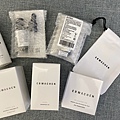
2021.02.27.

2021.02. BRUNO x 嚕嚕米Moomin 聯名款多功能電烤盤。

另外一個角度。

章魚燒烤盤、平底盤、六格盤、木匙。
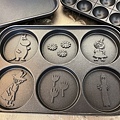
最可愛的是這個有嚕嚕米的6格烤盤。

2021.02.19.

好奇帶了兩片硅藻土地墊。

2020.02.03.

可愛的紅包正好農曆年可以用。

2021.02.

每個細節都做得很扎實,滿意!

洋裝。

近拍這塊布料,除了層次不同的交織外,還帶有些許亮片。

2021.01. My mag essentials 植萃鎂乳霜
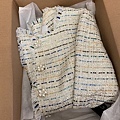
2020.12.等了一個多月,終於收到訂製好的軟呢外套了。

手工訂製雖然都要等上一陣子,但真的很值得!

2020.08.MOROCCANOIL 大板梳組
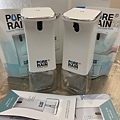
2020.07.Aroma Sense自動感應洗手機

2020.06.CASSA BODY PLATE 陶瓷刮板。
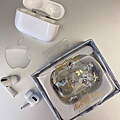
2020.05. Kingxbar AirPods Pro保護套。
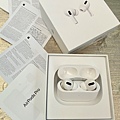
2020.05.AirPods Pro

2020.05.溫灸器。
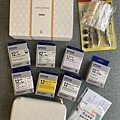
2020.05.買給自己的母親節禮物:標籤機。

它有個漂亮的外盒,真是賞心悅目。

機身實體的樣子。

團購的優惠滿額會送贈品,贈品是這個可以DIY的扣環。
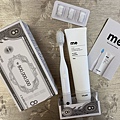
2020.04.
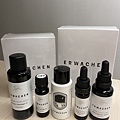
2020.03. Erwachen春日橙花組。

2020.新入荷的粉餅。
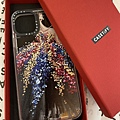
2020.購入了新的手機殼。

2020.01.送給自己的2020新年禮物 :)

2019.12.小米手環4。

2019.10.奶茶色的凡登抓夾。

2019.10.Panda甜夢枕&舒眠眼罩。

甜夢眼罩。

2019.08.購於名古屋。

2019.07.購於香港國際機場。

2019.07.INNA ORGANIC

2019.05.偽單身HK之旅的買物。

雙色皮帶。

回程居然又遇到班機延誤...(是的,去程延誤,回程也延誤,第一次碰到這樣=..=)

2019.05.Aroma Sense 過濾蓮蓬頭。

本來以為老公兒會不愛這款香芬(有檸檬香)的味道...

2019.05.

2019.小米自拍棒。

2019.04.感謝友人歐洲旅遊熱心幫忙帶回來的項鍊。

開香~基本款好搭配。

2019.04.近年小白鞋當道。
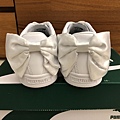
蝴蝶結設計在後跟的地方。

2019.03.好久沒有幫入手的飾品拍照。

2019.01.

2019.01.

2019.Happy New Year!!!

2018.12.

2018.12.再補貨。

2018.11.趁週年慶補一些貨。
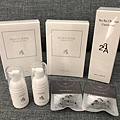
28A面膜*2、去角質還原凝露*1。
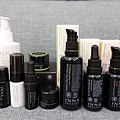
INNA ORGANIC

特別稱讚一下這罐初生輕潤身體乳。
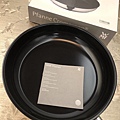
新入手平底鍋。

2018.10.美麗的大理石紋手機殼。
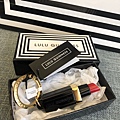
2018.09.可愛的鑰匙圈。

2018.09.除蟎機。

2018.07.蝴蝶型太陽眼鏡。

2018.05.經典氣墊梳。

2018.04.17.防感應護照包。

2018.04.絲縷編織鞋(金)。

防水購物提袋。

2018.04.
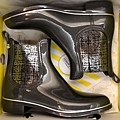
2018.03.年後進行了鞋子的第二波淘汰。

美系摺疊鞋。

2018.03.不銹鋼電鍋 (SUS 316L)

12.5 超能雙C精華 (2018.02)。

28A旺旺福袋面膜組。

帆布袋,質感還蠻厚實。
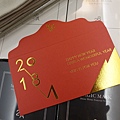
紅包袋的質感也很優。
相片最新留言
相簿列表資訊
- 最新上傳:
- 2025/04/02
- 全站分類:
- 隨手拍拍
- 本日人氣:
- 0
- 累積人氣:
- 10455




Physicists capture the sound of a “perfect” fluid
The results should help scientists study the viscosity in neutron stars, the plasma of the early universe, and other strongly interacting fluids.
Jennifer Chu | MIT News Office
Publication Date:
December 3, 2020
Press Inquiries
sound graph
Caption:
Scientists have captured the sound of a “perfect fluid,” which flows with the smallest amount of friction allowed by the laws of quantum mechanics.
Credits:
Image: Christine Daniloff, MIT
For some, the sound of a “perfect flow” might be the gentle lapping of a forest brook or perhaps the tinkling of water poured from a pitcher. For physicists, a perfect flow is more specific, referring to a fluid that flows with the smallest amount of friction, or viscosity, allowed by the laws of quantum mechanics. Such perfectly fluid behavior is rare in nature, but it is thought to occur in the cores of neutron stars and in the soupy plasma of the early universe.
Now MIT physicists have created a perfect fluid in the laboratory, and found that it sounds something like this:
This recording is a product of a glissando of sound waves that the team sent through a carefully controlled gas of elementary particles known as fermions. The pitches that can be heard are the particular frequencies at which the gas resonates like a plucked string.
The researchers analyzed thousands of sound waves traveling through this gas, to measure its “sound diffusion,” or how quickly sound dissipates in the gas, which is related directly to a material’s viscosity, or internal friction.
Surprisingly, they found that the fluid’s sound diffusion was so low as to be described by a “quantum” amount of friction, given by a constant of nature known as Planck’s constant, and the mass of the individual fermions in the fluid.
This fundamental value confirmed that the strongly interacting fermion gas behaves as a perfect fluid, and is universal in nature. The results, published today in the journal Science, demonstrate the first time that scientists have been able to measure sound diffusion in a perfect fluid.
Scientists can now use the fluid as a model of other, more complicated perfect flows, to estimate the viscosity of the plasma in the early universe, as well as the quantum friction within neutron stars — properties that would otherwise be impossible to calculate. Scientists might even be able to approximately predict the sounds they make.
“It’s quite difficult to listen to a neutron star,” says Martin Zwierlein, the Thomas A. Frank Professor of Physics at MIT. “But now you could mimic it in a lab using atoms, shake that atomic soup and listen to it, and know how a neutron star would sound.”
While a neutron star and the team’s gas differ widely in terms of their size and the speed at which sound travels through, from some rough calculations Zwierlein estimates that the star’s resonant frequencies would be similar to those of the gas, and even audible — “if you could get your ear close without being ripped apart by gravity,” he adds.
Zwierlein’s co-authors are lead author Parth Patel, Zhenjie Yan, Biswaroop Mukherjee, Richard Fletcher, and Julian Struck of the MIT-Harvard Center for Ultracold Atoms.
Tap, listen, learn
To create a perfect fluid in the lab, Zwierlein’s team generated a gas of strongly interacting fermions — elementary particles, such as electrons, protons, and neutrons, that are considered the building blocks of all matter. A fermion is defined by its half-integer spin, a property that prevents one fermion from assuming the same spin as another nearby fermion. This exclusive nature is what enables the diversity of atomic structures found in the periodic table of elements.
“If electrons were not fermions, but happy to be in the same state, hydrogen, helium, and all atoms, and we ourselves, would look the same, like some terrible, boring soup,” Zwierlein says.
Fermions naturally prefer to keep apart from each other. But when they are made to strongly interact, they can behave as a perfect fluid, with very low viscosity. To create such a perfect fluid, the researchers first used a system of lasers to trap a gas of lithium-6 atoms, which are considered fermions.
The researchers precisely configured the lasers to form an optical box around the fermion gas. The lasers were tuned such that whenever the fermions hit the edges of the box they bounced back into the gas. Also, the interactions between fermions were controlled to be as strong as allowed by quantum mechanics, so that inside the box, fermions had to collide with each other at every encounter. This made the fermions turn into a perfect fluid.
“We had to make a fluid with uniform density, and only then could we tap on one side, listen to the other side, and learn from it,” Zwierlein says. “It was actually quite diffult to get to this place where we could use sound in this seemingly natural way.”
“Flow in a perfect way”
The team then sent sound waves through one side of the optical box by simply varying the brightness of one of the walls, to generate sound-like vibrations through the fluid at particular frequencies. They recorded thousands of snapshots of the fluid as each sound wave rippled through.
“All these snapshots together give us a sonogram, and it’s a bit like what’s done when taking an ultrasound at the doctor’s office,” Zwierlein says.
In the end, they were able to watch the fluid’s density ripple in response to each type of sound wave. They then looked for the sound frequencies that generated a resonance, or an amplified sound in the fluid, similar to singing at a wine glass and finding the frequency at which it shatters.
“The quality of the resonances tells me about the fluid’s viscosity, or sound diffusivity,” Zwierlein explains. “If a fluid has low viscosity, it can build up a very strong sound wave and be very loud, if hit at just the right frequency. If it’s a very viscous fluid, then it doesn’t have any good resonances.”
From their data, the researchers observed clear resonances through the fluid, particularly at low frequencies. From the distribution of these resonances, they calculated the fluid’s sound diffusion. This value, they found, could also be calculated very simply via Planck’s constant and the mass of the average fermion in the gas.
This told the researchers that the gas was a perfect fluid, and fundamental in nature: Its sound diffusion, and therefore its viscosity, was at the lowest possible limit set by quantum mechanics.
Zwierlein says in addition to using the results to estimate quantum friction in more exotic matter, such as neutron stars, the results can be helpful in understanding how certain materials might be made to exhibit perfect, superconducting flow.
“This work connects directly to resistance in materials,” Zwierlein says. “Having figured out what’s the lowest resistance you could have from a gas tells us what can happen with electrons in materials, and how one might make materials where electrons could flow in a perfect way. That’s exciting.”
This research was supported, in part, by the National Science Foundation and the NSF Center for Ultracold Atoms, the Air Force Office of Scientific Research, the Office of Naval Research, and the David and Lucile Packard Foundation.
Share this news article on:
Twitter
Facebook
LinkedIn
Reddit
Print
Press Mentions
WGBH
Prof. Martin Zwierlein speaks with Edgar Herwick III of WGBH Radio about his work capturing the sound of a “perfect” fluid. "It was a beautiful sound," says Zwierlein. "It was a quantum sound. In a way it was the most long-lasting sound that you can imagine given the laws of quantum mechanics.”
Full story via WGBH →
New Scientist
New Scientist reporter Abigail Beall spotlights how MIT researchers have listened to sound waves traveling through a "perfect" fluid, which could shed light on the resonant frequencies within a neutron star. “The quality of the resonances tells me about the fluid’s viscosity, or sound diffusivity,” says Prof. Martin Zwierlein. “If a fluid has low viscosity, it can build up a very strong sound wave and be very loud, if hit at just the right frequency. If it’s a very viscous fluid, then it doesn’t have any good resonances.”
Full story via New Scientist →
Related Links
Martin Zwierlein
Research Laboratory of Electronics
MIT-Harvard Center for Ultracold Atoms
Department of Physics
School of Science
Related Topics
Light
Photonics
Physics
Research
Research Laboratory of Electronics
School of Science
National Science Foundation (NSF)